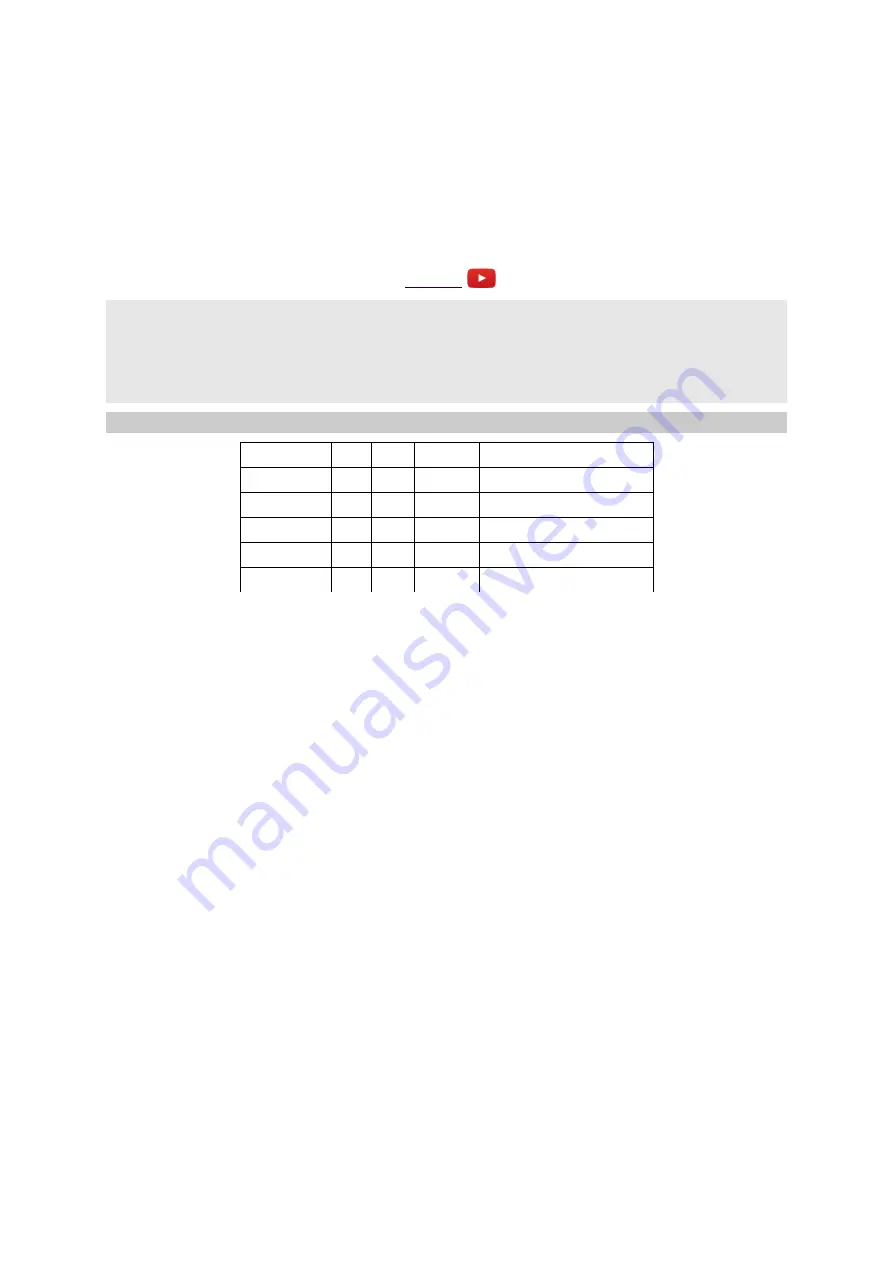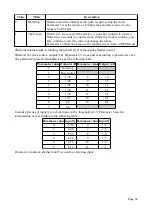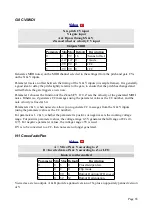
exponential curve at 0 to an almost linear shape at 32.
A & B both output the envelope CV. Parameters 1 & 2 are attenuverters, which can attenuate and/or
invert the signal for each output independently. The unattenuated envelope level is 8V.
If parameter 1 is set to the special value 41, output A becomes an end-of-cycle trigger output,
generating a 10ms 5V pulse at the end of the envelope's release stage.
F-2 Clockable AD Envelope (with gate)
X is clock input
Y is gate input
Z sets the envelope shape
A is envelope output
B is envelope output
Tap tempo enabled
Parameter Min Max Default
Description
0
-15 8
0
Delay time multiplier.
1
-40 41
32
Output A Attenuverter.
2
-40 40
32
Output B Attenuverter.
3
0
32
26
Attack shape.
4
0
32
10
Decay shape.
This algorithm is a two-stage (attack/decay) envelope generator, whose overall time is set from an
input clock pulse. The envelope is continuously output (starting on each new clock pulse) while
enabled by the gate.
Input X is the clock input. Any clock pulse in excess of 1V can be used. The time between rising
trigger edges is used to set the envelope time.
Parameter 0 applies a multiplier to the envelope time, according to the table above.
Input Y is a gate input. While this input is below 1V, the output is forced to 0V.
Z sets the envelope shape, from short attack & long decay, to long attack and short decay.
Parameters 3 & 4 set the attack and decay shapes of the envelope respectively, from an exaggerated
exponential curve at 0 to an almost linear shape at 32.
A & B both output the envelope CV. Parameters 1 & 2 are attenuverters, which can attenuate and/or
invert the signal for each output independently. The unattenuated envelope level is 8V.
If parameter 1 is set to the special value 41, output A becomes an end-of-cycle trigger output,
generating a 10ms 5V pulse at the end of the envelope's release stage.
Page 51













































